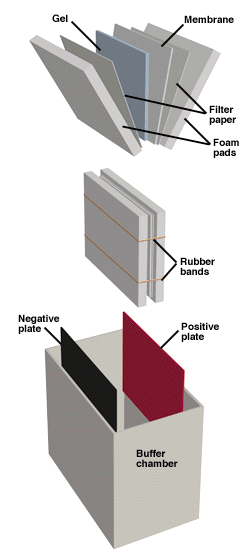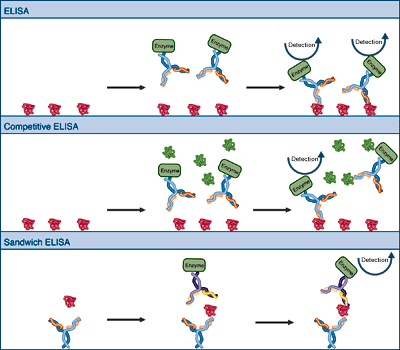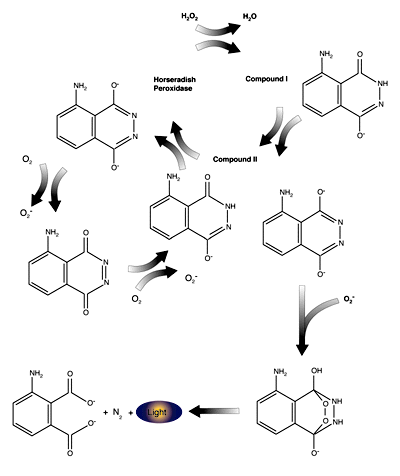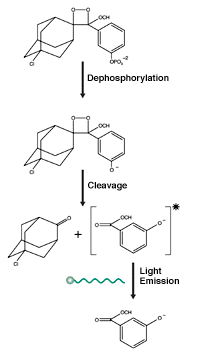Posts by National Diagnostics
Immunohistochemistry
Immunohistochemistry is the application of antibody/antigen interactions to provide information about biological systems. The body’s response to the introduction of a foreign agent, known as the immune response, results in the production of antibodies which bind the offending material. Antibodies bind tightly and specifically to an “epitope” (one specific structure) on an “antigen” (foreign molecule…
Read MoreAldehyde Fixatives
Formaldehyde and glutaraldehyde are the most commonly used aldehyde fixatives. They work by forming cross-links both within and between proteins, particularly between lysine residues. Damage to the tertiary structure of the proteins occurs on a limited basis. Formalin (37% aqueous formaldehyde) is normally diluted 10 fold and neutrally buffered to make a working fixative solution…
Read MoreOverview of Fixation
To maintain the tissue in as lifelike a state as possible, tissue for analysis is usually placed directly into a fixative solution upon removal from the body. Fixation is normally carried out as soon as possible to prevent autolysis and to reduce possible infectivity. Several factors determine the choice of fixative for a given application.…
Read MoreOverview of Western Blotting
Proteins can also be detected immunologically following electrophoresis, a technique known as Western blotting. This method relies on the fact that most epitopes (sites recognized by antibodies, generally comprising several amino acids) are still recognizable following denaturing of the protein with SDS and binding to the surface of a membrane. The Western Blotting apparatus. Proteins…
Read MoreEnzyme Linked Immunosorbent Assay (ELISA)
One of the most straightforward applications of immunological detection is the ELISA or enzyme-linked immunosorbent assay. In the simplest system, the bound antigen is probed with antibodies that carry covalently attached enzyme molecules. Antibody binding immobilizes the enzyme in the vicinity of the bound antigen, allowing detection of the antigen. Variations include a competition ELISA…
Read MoreImmunostaining with Horseradish Peroxidase
Chromogenic and luminometric substances are also available for horseradish peroxidase (HRP). The “classic” chromogen used with HRP is diaminobenzidine (DAB). In the presence of H2O2, HRP will oxidize DAB, creating a water insoluble brown precipitate. DAB has two primary disadvantages, it is relatively insensitive and it is a potential carcinogen which must be decontaminated before…
Read MoreImmunostaining with Alkaline Phosphatase
Alkaline phosphatase catalyzes the removal of a phosphate group from its substrate. A variety of synthetic substrates have been constructed which, on phosphate hydrolysis, liberate chromogens or luminescent compounds. A commonly used chromogenic substrate is bromochloroindoyl phosphate. (BCIP) in conjunction with nitro blue tetrazolium (NBT). Dephosphorylation of BCIP generates one half of an indigo dye…
Read MoreMechanism of Immunostaining
The basic method of immunostaining is to probe with an antibody that is bound to a detectable molecule such as an enzyme or a fluorescent dye. The highly specific binding interaction between antibodies and their unique antigens has been exploited to create sensitive and specific detection systems for proteins. An antibody can be raised and/or…
Read MoreStaining Proteins Immobilized on Membranes
Immunological detection of proteins requires that proteins be transferred and immobilized onto a membrane support after electrophoresis (see Western Blotting). Staining of the immobilized proteins establishes transfer efficiency, and allows the operator to mark the membrane with the locations of lanes and size markers, facilitating later analysis. The mechanism of staining is the same as for…
Read MoreGuide Strip Technique
In certain instances, the effects of staining a protein may interfere with subsequent analysis. Examples are Coomassie staining when enzymatic activity is required, or silver staining prior to amino acid analysis when covalent modification of the amino acids will give spurious results. In these cases, it is common to use a “guide strip”. A guide…
Read More



